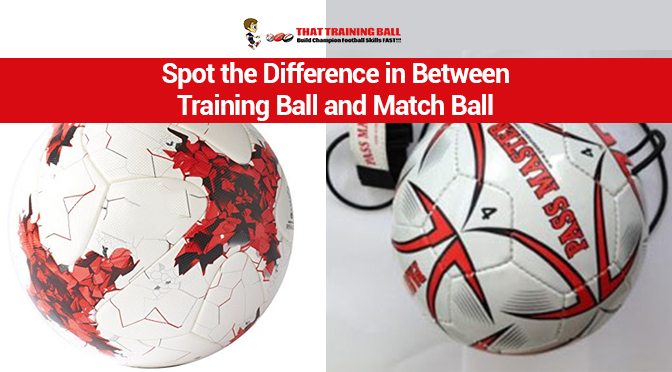What actually comes to your mind when you hear the terms ‘training ball’ and ‘match ball’? The answer seems to be quite simple, isn’t it? The training ball is used for training whereas the match ball is exclusively used in soccer or rugby matches.
Well, in reality, the answer is not that simple as it seems to be. One needs to dig a bit deep to understand the actual differences that are there in the structure and models of both the types.
In this blog, the experts associated with That Training Ball who specialises in selling training balls that are often known as AFL Bungee Ball will put their focus on explaining the difference more vividly. Let’s go through the following to learn about the differences.
What are the Features of Training Balls?

Of course, as per the primary definition, it is a ball that is being used mostly for the team training. Used in the initial stages of practice, it is the best for backyard juggling, playing pickup, or kicking the ball against the solid walls. It surely helps in developing the stamina of a player as he/she keeps on practising with this ball.
The material of training balls is being kept quite sturdy so that it can withstand the wear and tear of regular use. These particular balls are usually a bit stiffer than the other match balls. The bladder, stitch and PU cover used for external coverage contribute to this stiffness.
The main purpose of practising with training ball before getting into the field and getting started with the match ball is to strengthen the player. Practising with a ball that has a better thickness and resistance power will help in strengthening the feet; teach them to have better control over the ball that finally helps in skill development in the field.
Now, when it comes to the use of training balls, it is not only used for the training purpose but also for recreational purposes where match balls are not at all required.
What are the Features of Match Balls?

When it is the real game of football, the match balls come into the play. These balls are definitely made for the official games. The unique constructions of the balls make it different from that of the training balls. It is meant for offering high performance in the field.
The prime difference between these two types of the balls is while the training ball has a stiff and hard bladder, the match balls have a softer bladder compared to that. So, while the players are receiving, passing or shooting the match ball, it becomes smooth and easy.
When you are buying a superior quality football on a string from us, you can expect to get excellent longevity. However, when you are purchasing a match ball exclusively secured for soccer matches, you cannot expect to get the same level of durability.
Final Words
One is for performance, and the other is for skill development – the picture is quite clear here. So, when it comes to the point of getting trained, start with the training ball. If you are buying for your young one, make sure you know the age specifications for these particular balls before purchasing.







